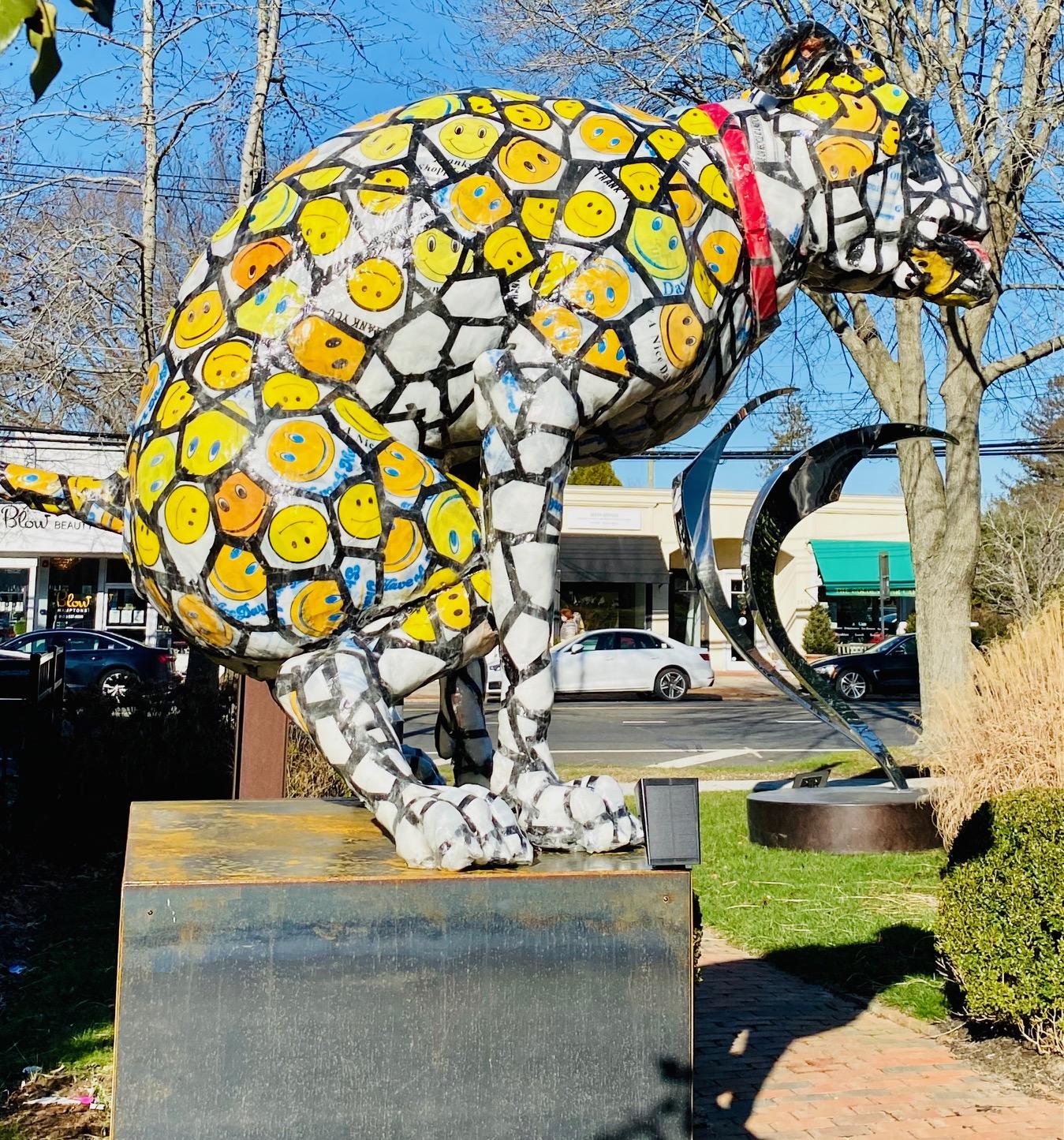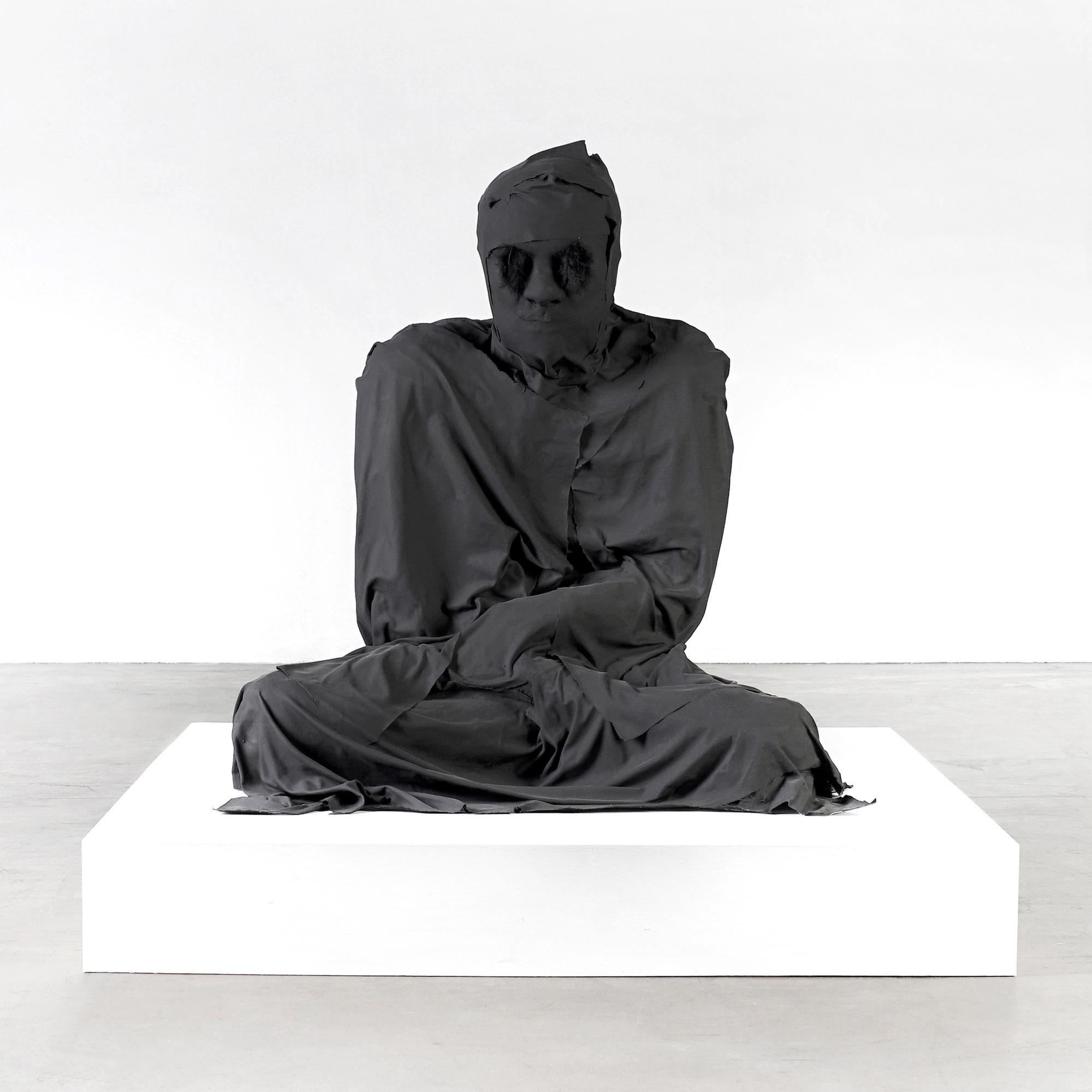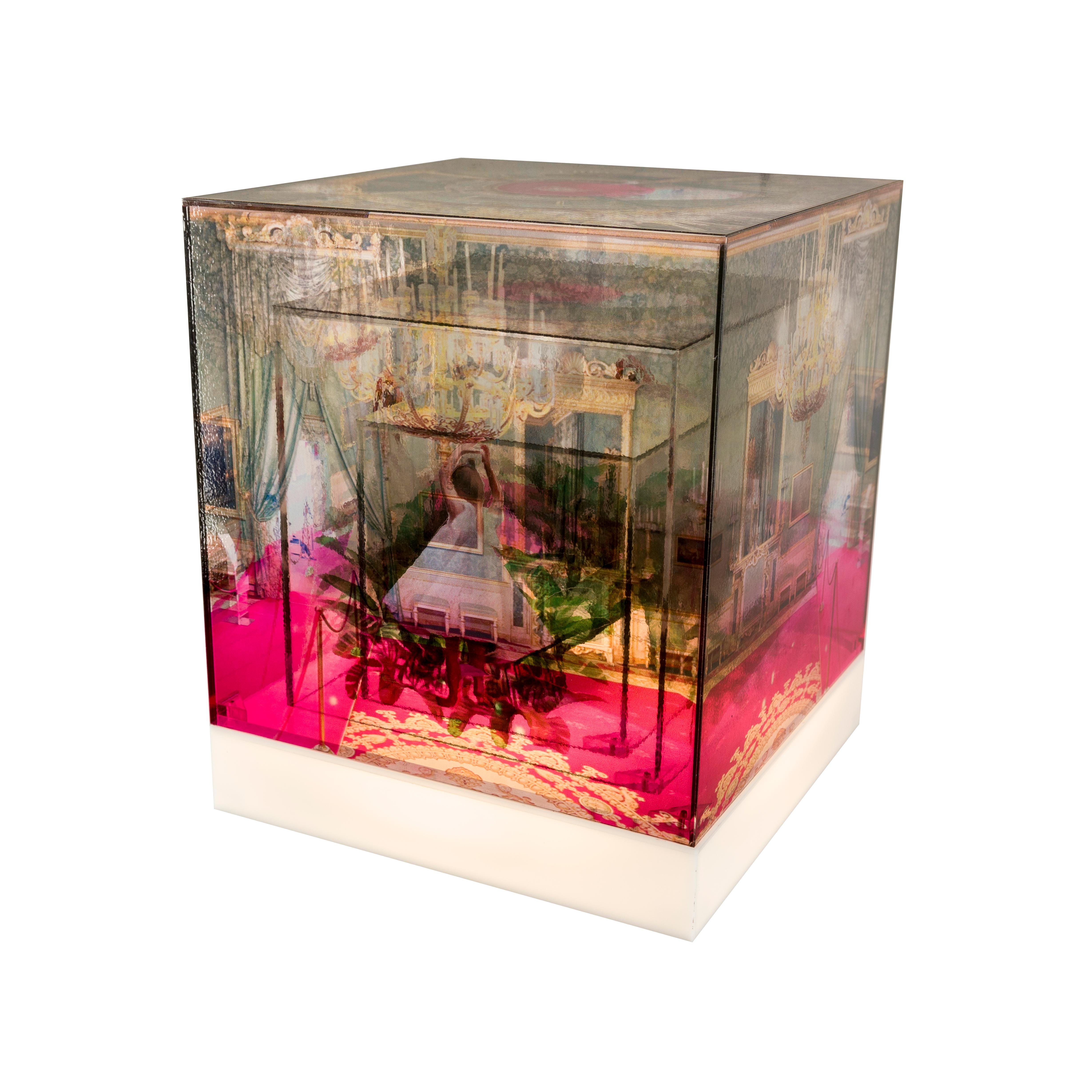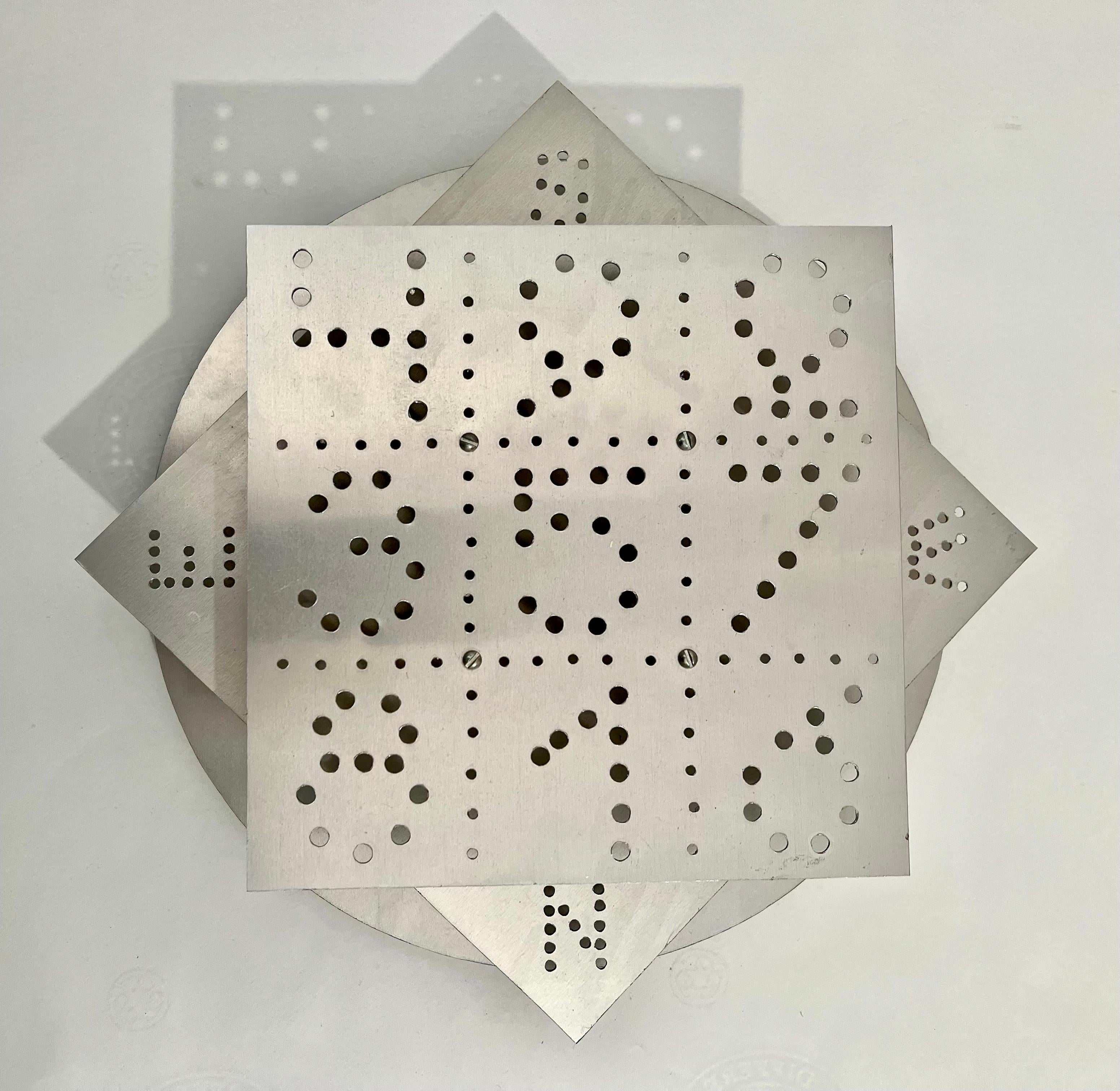Items Similar to Conceptual Lawn Mower Sculpture Grass Unique Large White Green Large Cut
Video Loading
Want more images or videos?
Request additional images or videos from the seller
1 of 6
Robert BoothConceptual Lawn Mower Sculpture Grass Unique Large White Green Large Cut2015
2015
About the Item
Robert Booth is a Western New York visionary conceptual sculpture artist known for his haunting and thought-provoking creations. His work takes viewers on a journey into the shadows of the human psyche, where darkness and depth collide to create compelling narratives. Booth's sculptures delve into complex themes, often exploring the darker aspects of the human experience, and they are characterized by their ability to evoke deep emotions and introspection. His art challenges conventional norms, offering a hauntingly beautiful and enigmatic perspective that lingers in the mind long after viewing. Robert Booth's sculptures are a testament to his unique ability to transform darkness into a powerful artistic expression.
This piece is titled LAWNMOWERS/CUT.
- Creator:Robert Booth
- Creation Year:2015
- Dimensions:Height: 34 in (86.36 cm)Width: 12 in (30.48 cm)Depth: 12 in (30.48 cm)
- Medium:
- Movement & Style:
- Period:
- Condition:
- Gallery Location:Buffalo, NY
- Reference Number:1stDibs: LU139213036372
About the Seller
4.9
Platinum Seller
These expertly vetted sellers are 1stDibs' most experienced sellers and are rated highest by our customers.
Established in 1970
1stDibs seller since 2015
2,397 sales on 1stDibs
Typical response time: 1 hour
- ShippingRetrieving quote...Ships From: Buffalo, NY
- Return PolicyA return for this item may be initiated within 2 days of delivery.
More From This SellerView All
- Conceptual House Wall Sculpture Wood Chair Ladder Dark Moody Match Brown UniqueLocated in Buffalo, NYRobert Booth is a visionary conceptual sculpture artist known for his haunting and thought-provoking creations. His work takes viewers on a journey into the shadows of the human psyc...Category
21st Century and Contemporary Conceptual Sculptures
MaterialsMixed Media, Wood
- Conceptual Shovel Wall Sculpture Frame Chair Chalk Brown BlackLocated in Buffalo, NYRobert Booth is a visionary conceptual sculpture artist known for his haunting and thought-provoking creations. His work takes viewers on a journey into the shadows of the human psyc...Category
21st Century and Contemporary Conceptual Sculptures
MaterialsSlate, Steel
- Conceptual House Sculpture Dark Wood Chair Brown Grain ThoughtLocated in Buffalo, NYRobert Booth is a Western New York visionary conceptual sculpture artist known for his haunting and thought-provoking creations. His work takes viewers on a journey into the shadows ...Category
21st Century and Contemporary Conceptual Sculptures
MaterialsMixed Media, Wood
- Highly conceptual mixed media wall sculpture Contemporary Cat charm rabbit footBy Nando Alvarez PerezLocated in Buffalo, NYNo Fear (Trapper Keeper) UV print on aluminum, chain, jewelry, keychain, sticker, Croc Jibbitz, rabbit’s foot, Tamagotchi 18x48” 2019 $975 Eternal Flame i...Category
2010s Conceptual Figurative Sculptures
MaterialsMetal
- Highly conceptual mixed media wall sculpture Contemporary skull emoji jewelryBy Nando Alvarez PerezLocated in Buffalo, NYMonarch Memento Mori UV print on aluminum, chain, jewelry, keychain, boondoggle, stickers, Croc Jibbitz, rabbits’ foot 12x36” 2019 $975 Eternal Flame is a...Category
2010s Conceptual Figurative Sculptures
MaterialsMetal
- Conceptual House Shovel Wall Sculpture Wood Metal Tape Grey White Neutral UniqueLocated in Buffalo, NYRobert Booth is a visionary conceptual sculpture artist known for his haunting and thought-provoking creations. His work takes viewers on a journey into the shadows of the human psyc...Category
21st Century and Contemporary Conceptual Sculptures
MaterialsSteel
You May Also Like
- Artie - Pitbull/Boxer - SculptureBy Will KurtzLocated in New York, NYFun Dog sculpture from great sculptor. Comes with fun "dog poop" About the Artist: Will Kurtz was born in Flint, Michigan and received his Bachelor of Landscape Architecture ...Category
2010s Conceptual Figurative Sculptures
MaterialsMixed Media
- Meditation ManBy Mattia NovelloLocated in Rye, NYThe "Meditation Man," in his yoga pose, is in total concentration. His plumaged eyes could be interpreted as life's struggles as he continues to maintain his maximum mental focus. ...Category
2010s Conceptual Figurative Sculptures
MaterialsCanvas, Mixed Media, Acrylic, Polyurethane
- Sculpture, Cinder Blocks For my FatherBy Alberto Montaño MasonLocated in Cuernavaca, MorelosAsh and lead blocks. Piece made of 3 blocks Exhibited at the International Art Fair, Zona Maco 2019 in Mexico City. Exhibited at Mana Contemporary at Jersey City, New Jersey in 201...Category
21st Century and Contemporary Conceptual Abstract Sculptures
MaterialsMetal
- Habitáculos 1Located in PARIS, FRGiselle Borrás is a Colombian born artist who has lived and worked in Colombia, Spain and the United States of America. She has had several group and solo shows, and her work can be found in private collections across the United States and Colombia. She studied painting, drawing and color theory with several artists in Colombia and then continued her development in Madrid, Spain at The Fuencarral Studio. For the past twelve years she has been committed to her artistic work drawing inspiration from her continuous admiration for the human body. The end results of her work are these subtle and weightless figures, created from maintaining the painting process spontaneous, filled with innocence and yet providing the viewer much force, energy and presence. Her colors remain consistent, always vibrant and bold, and the painting is finished when the idea has become a complete discussion. Art is a language spoken with fluency by this up and coming artist...Category
2010s Conceptual Figurative Sculptures
MaterialsMixed Media
- Russian Samizdat Art Conceptual Photo Sculpture Assemblage Gerlovin & GerlovinaLocated in Surfside, FLRimma Gerlovina and Valeriy Gerlovin Clock, 1987-94 Aluminum sculpture, mixed media and c-print photograph construction, c-print, felt tip marker 13 h × 13 w × 4 d in (30 × 30 × 6 cm) Rimma Gerlovina and Valeriy Gerlovin were founding members of the underground conceptual movement Samizdat in the Soviet Union, described in their book Russian Samizdat Art. Based on a play of paradoxes, their work is rich with philosophic and mythological implications, reflected in their writing as well. Their book Concepts was published in Russia in 2012. The work by Rimma Gerlovina and Valeriy Gerlovin is emphatically contemporary. The artist couple were part of the Moscow Conceptualists, their performance Costumes, from 1977, deepened their ongoing work with linguistic semiotic systems and their own bodies. Considering the context in which Gerlovina and Gerlovin made their work—that of political restrictions on public life, of unfreedom, and censorship—their collaborative togetherness must also be read as a space of possibility for political community and resistance. Rimma Gerlovina’s hair is featured prominently in the art of the Gerlovins as a constructing element of the body. Used for the linear drawings her braids transmit transpersonal waves reminiscent of an aura of live filaments. Long loose hairs function as threads of life; streaming in abundance, they allude to Aphrodisiac vitality and Samsonian strength. On the other hand, they are the haircloth worn during mourning and penitence. In New York they continued to make sculptural objects, and their photographic projects grew into an extended series called Photoglyphs. In their photographs, they use their own faces to explore the nature of thought and what lies beyond it. Since coming to the United States in 1980, they had many exhibitions in galleries and museums including the Art Institute of Chicago. The New Orleans Museum of Art launched a retrospective of their photography, which traveled to fifteen cities. Group exhibitions include the Venice Biennale, the Guggenheim Museum, New York, Smithsonian National Museum of American Art, Washington D.C., Bonn Kunsthalle, Germany, Tokyo Metropolitan Museum of Photography, State Tretyakov Gallery, Moscow, and others. Samizdat or “self-published” began in the Soviet Union, and Samizdat art consists mainly of books and magazines published and distributed by the artists who made them. Samizdat art has sources in the innovative books and magazines turned out by the early 20th century Russian avant-garde—artists and writers like Olga Rozanova, Vladimir Mayakovsky, El Lissitzky, and Alexander Rodchenko. Artists as varied as Alexander Archipenko, Leon Bakst, Marc Chagall, Naum Gabo, Alexandra Exter...Category
1980s Conceptual Figurative Photography
MaterialsMetal
- Russian Samizdat Art Conceptual Compass Sculpture Assemblage Gerlovin, GerlovinaLocated in Surfside, FLRimma Gerlovina and Valeriy Gerlovin Compass, 1988 Aluminum sculpture, mixed media and c-print photograph construction, c-print, felt tip marker 12.5 h × 12.5w × 4 d in (30 × 30 × 6 cm) Rimma Gerlovina and Valeriy Gerlovin were founding members of the underground conceptual movement Samizdat in the Soviet Union, described in their book Russian Samizdat Art. Based on a play of paradoxes, their work is rich with philosophic and mythological implications, reflected in their writing as well. Their book Concepts was published in Russia in 2012. The work by Rimma Gerlovina and Valeriy Gerlovin is emphatically contemporary. The artist couple were part of the Moscow Conceptualists, their performance Costumes, from 1977, deepened their ongoing work with linguistic semiotic systems and their own bodies. Considering the context in which Gerlovina and Gerlovin made their work—that of political restrictions on public life, of unfreedom, and censorship—their collaborative togetherness must also be read as a space of possibility for political community and resistance. Rimma Gerlovina’s hair is featured prominently in the art of the Gerlovins as a constructing element of the body. Used for the linear drawings her braids transmit transpersonal waves reminiscent of an aura of live filaments. Long loose hairs function as threads of life; streaming in abundance, they allude to Aphrodisiac vitality and Samsonian strength. On the other hand, they are the haircloth worn during mourning and penitence. In New York they continued to make sculptural objects, and their photographic projects grew into an extended series called Photoglyphs. In their photographs, they use their own faces to explore the nature of thought and what lies beyond it. Since coming to the United States in 1980, they had many exhibitions in galleries and museums including the Art Institute of Chicago. The New Orleans Museum of Art launched a retrospective of their photography, which traveled to fifteen cities. Group exhibitions include the Venice Biennale, the Guggenheim Museum, New York, Smithsonian National Museum of American Art, Washington D.C., Bonn Kunsthalle, Germany, Tokyo Metropolitan Museum of Photography, State Tretyakov Gallery, Moscow, and others. Samizdat or “self-published” began in the Soviet Union, and Samizdat art consists mainly of books and magazines published and distributed by the artists who made them. Samizdat art has sources in the innovative books and magazines turned out by the early 20th century Russian avant-garde—artists and writers like Olga Rozanova, Vladimir Mayakovsky, El Lissitzky, and Alexander Rodchenko. Artists as varied as Alexander Archipenko, Leon Bakst, Marc Chagall, Naum Gabo, Alexandra Exter...Category
1980s Conceptual Figurative Photography
MaterialsMetal





